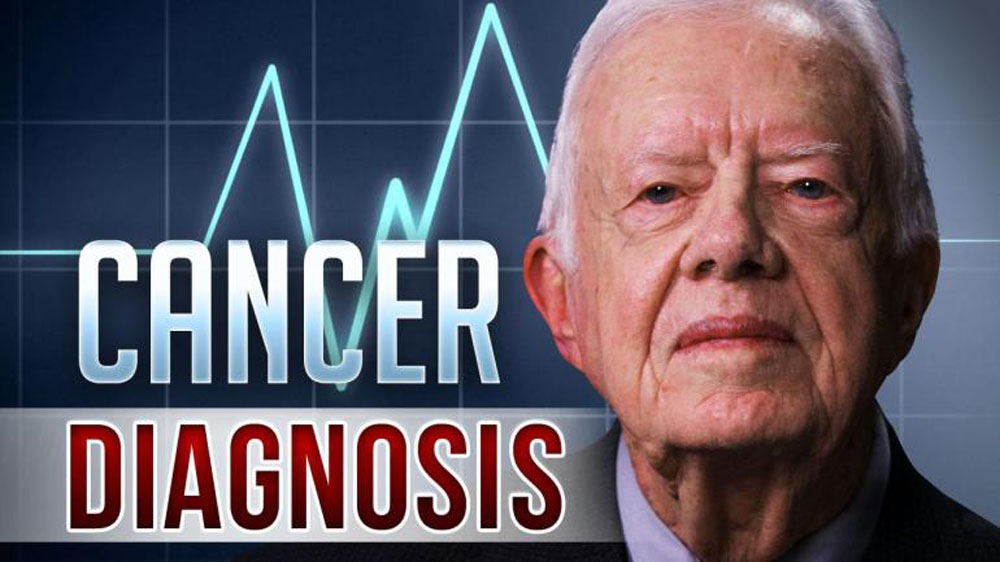Former President Jimmy Carter’s recent announcement that he has metastatic melanoma is the most recent example of the complex relationship that exists between famous people and illness disclosure. Over the past 25 to 50 years, celebrities have increasingly come forward with news of their diagnoses and prognoses. Although providing information can represent an additional burden to people already attempting to manage a difficult situation, these public episodes of illness have generally provided great educational opportunities. Mr. Carter’s cancer will likely do the same.
For years, openness was the exception, not the rule, especially in the case of sitting presidents. Grover Cleveland underwent a secret operation for cancer of the jaw in 1893; Woodrow Wilson concealed his severe 1919 stroke, essentially letting his wife, Edith, run the country; Franklin Roosevelt’s doctors concealed his diagnoses of dangerously high blood pressure and congestive heart failure from the country and, to some degree, from Mr. Roosevelt as well. But with the assassination attempt on Ronald Reagan in 1981, everything changed, putting teeth into the 25th amendment to the constitution, originally passed in 1967. Since 1981, there has been much greater transparency when it comes to the health of presidents, ensuring that the country is being run by an able-bodied person. Similar disclosure is now expected of most politicians.
Certain ex-presidents, even though no longer bound by the 25th amendment, have nevertheless remained very open. Thus, when Richard Nixon suffered a major stroke in 1994, he and his family announced that he would forgo aggressive treatment. Mr. Reagan announced that same year that he had Alzheimer’s disease, while refuting rumors that the condition had actually begun during his presidency.
In the case of non-politicians, there has never been any obligation to disclose serious illness. That did not stop celebrities from being very active in promoting awareness of specific diseases, particularly cancer, in the years after World War II. Well-known figures ranging from Bing Crosby to Eleanor Roosevelt to Jack Dempsey to Rosemary Clooney appeared in American Cancer Society public service announcements urging people who noticed abnormal lumps or bleeding to immediately consult their physicians. Some public figures disclosed their cancer diagnoses at a time when most sufferers—famous or not—kept their news hush-hush. For example, John Foster Dulles, who was secretary of state in the 1950s, revealed that he had colon cancer. The women’s golf star Babe Didrickson Zaharias spoke openly to the press about her colon cancer and treatments.
But secrecy or half-truths were much more commonplace. In 1948, the media used all sorts of euphemisms to describe Babe Ruth’s throat cancer, even omitting the word “cancer” when reporting on his getting treatment at New York’s Memorial Hospital (today Memorial Sloan-Kettering Cancer Center ), which was a cancer hospital. It had acted similarly a few years earlier when Mr. Ruth’s former teammate, Lou Gehrig, developed amyotrophic lateral sclerosis. Reporters named the disease but printed all sort of misleading information about its prognosis, which was dire.
Recommended by Forbes
As I documented in my book, When Illness Goes Public: Celebrity Patients and How We Look at Medicine, a sea change occurred in the early 1970s. Building on feminism and the nascent patients’ rights movement, famous women with breast cancer went public with their diagnoses, urging women to examine their breasts, get mammograms and, at times, to question the medical profession’s continued reliance on the radical mastectomy. Best known among these women were First Lady Betty Ford, Shirley Temple Black and the television correspondent Betty Rollin. But it was easier to go public—and become the face of a disease—when one’s prognosis was good. All three of these women survived their cancers. Indeed, feel-good stories about cancer at times made it seem as if the disease was coming under control.
The reality, of course, was that plenty of people—including celebrities—were still dying of cancer. Understandably, many chose not to disclose their diagnoses. A recent example is Ed Bradley, the “60 Minutes” correspondent who quietly died of leukemia in 2006.
But in an era of the Internet and 24/7 news coverage, this type of strategy is becoming less viable. Covering a celebrity’s life but not his or her death—the informal line that had existed for Gehrig and Ruth—has become obsolete. These days, therefore, famous people often announce their diagnoses before the press “scoops” them.
This scenario has occurred with Mr. Carter. Disclosure, however, does not equal truth. Celebrities with serious cancers—such as Ted Kennedy (brain cancer) and Farrah Fawcett (anal cancer)—have been especially prone to give upbeat prognoses which belied their actual medical conditions. This misinformation, while understandable from an emotional perspective, is a disservice to others dealing with similar diseases. Mr. Carter may eventually struggle with how much information he actually wants to reveal.
Ultimately, we should just appreciate the candor of celebrities facing serious illnesses. Dealing with a grave diagnosis and the prospect of death is hard enough. Keeping a game face for the public makes the challenge even harder.
Originally published on Forbes.com on August 21, 2015.
